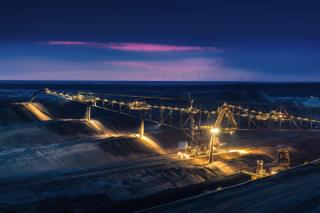
Cultural heritage: Indigenous and cultural heritage values driving sustainable development
by Flavia Kiperman
View post

Stakeholder engagement is a critical pillar in and beyond Environmental and Social Impact Assessments (ESIAs) - especially in the context of complex, large-scale energy projects. Ahead of the upcoming Namibia Oil & Gas Conference, we spoke to Sue Reuther, Middle East and Africa Energy Sector Lead, about the role of stakeholder engagement in projects development.
1. At what stage of a project do you typically begin engaging stakeholders?
Early engagement is often the answer to build understanding of the project and relationships with stakeholders. Timing and nature of engagement depend on the availability of public project information, the developer’s decision-making on project go-ahead, stakeholders’ familiarity with the (type of) project and significance of potential project impacts/benefits.
Stakeholder engagement can occur at different project stages and by different parties, such as authorities (during strategic planning or planning applications), proponent (as voluntary engagement) or consultants (during feasibility or environmental studies).
2. How do you handle situations where stakeholder expectations do not align with project realities?
Many stakeholders have limited information and understanding of projects; not surprising considering the multitude of projects and processes we are unfamiliar with in our daily lives. This can lead to unfounded concerns or expectations, and both may lead to stakeholder opposition to a project now or later (when expectations are not met).
This effect is more pronounced where a project is the first of its kind, prominently discussed and perceived to threaten existing livelihoods or to provide a sole future source of livelihoods in the absence of other opportunities.
Clear, transparent and consistent communication on the project nature, benefits and impacts, in a manner that people can relate to and via a number of channels, builds trust over time and is the most effective way of better aligning expectations and realities.
3. What do you wish more people understood about this part of the work?
Stakeholder engagement requires cultural sensitivity, personal empathy, active listening, an ability to break down complexity, and time. Effective communication also requires an element of trust, which is built over time and through involving people who stakeholders can relate to.
Stakeholders’ views and reactions to a message or project are influenced by their personal or cultural background, experiences, circumstances, and aspirations, even within the same community. Stakeholder engagement should thus not be expected to result in uniform opinions, but should facilitate informed participation and decision-making.
4. What are the strengths of SLR’s involvement and experience in ESIAs, particularly in the energy sector?
SLR’s diverse staff frequently engages with a wide range of stakeholders on many different projects. We can understand different points of view, communicate effectively, and anticipate likely questions. By virtue of our personal and professional exposure to different communities and projects we combine local expertise and a global lens.
Our in-house technical and advisory expertise and cross-sector experience enables us to engage knowledgeably on a wide range of topics and concerns. This is particularly important for complex and large-scale energy projects.
5. Why is it so important to have stakeholder engagement as part of the ESIA process?
Stakeholder engagement in ESIA processes provides critical checks and balances and an opportunity for people to actively participate in shaping their future paths. Stakeholder input into and review of ESIA processes ensures that findings are relevant, transparent and reasonable. Stakeholder preferences expressed during the engagement may also reveal specific local challenges and inform desired development paths in an area.
Effective stakeholder engagement in and beyond the ESIA process can mitigate the risk that key project impacts are overlooked and promote a social license to operate.
6. Who are stakeholders usually involved in the engagement process, and what are the benefits of their involvement?
Stakeholders involved in the engagement process often reflect the diverse make-up of societies, as well as the nature and stage of the project. ESIA processes focus on stakeholders potentially affected by a project; this includes communities in the project area of influence, NGOs working on relevant social or environmental aspects, and government authorities directing development.
Each stakeholder brings a unique perspective based on their experience and focus, which leads to a more holistic assessment of a project and findings that consider a range of perspectives. Project Lenders and financiers are important stakeholders if projects must meet specific requirements to qualify for funding.
7. What types of impacts are usually studied during an ESIA and addressed during stakeholder engagement?
ESIAs consider a wide range of social and environmental impacts related to aspects such as cultural heritage, community health and security, livelihoods, biodiversity and environmental health. The impacts studied during an ESIA depend on the nature of the project and the environment in which it is proposed and are informed by input from stakeholders.
ESIA findings are presented to and discussed with stakeholders to explain how they were derived and to obtain further input. Typically, stakeholders will be more interested in some of these impacts depending on their potential exposure, interest and expertise.
Sue will be speaking at the upcoming Namibia Oil & Gas Conference, where she will share more on SLR’s approach to responsible stakeholder engagement in energy projects.

by Flavia Kiperman

by Jasper Schrijvers , Matthew Hoare

by Clodagh Connolly, Nicola Inge, Andres Schottlaender